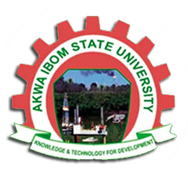IDENTITY SUSTAINABILITY AND CONNOTATIVE INTERPRETATION OF MASQUERADE SONGS IN SELECTED NIGERIAN COMMUNITIES
DOI:
https://doi.org/10.60787/aasd.vol3no1.71Abstract
This study analyzes the connotative use of language in selected Nigerian masquerade songs, highlighting the interplay of words, symbols, and cultural meanings within this cultural art form. Masquerades serve as
significant cultural expressions, embodying ancestral heritage, communal values, and social norms. Through a qualitative methodology, this study analyzes textual and visual elements of masquerade arts, focusing on the semantic layers of language presented through dialogue, songs, and narratives. The study draws from theoretical models of semiotics and cultural anthropology. Findings reveal that the connotative aspects of language does not only enhance the aesthetic experience but also communicate identity, spirituality, and social commentary. The concluding insights emphasize the importance of recognizing the multiple nature of language in masquerade art as a means of preserving cultural heritage and fostering cross-cultural understanding. This study recommends further research into the implications of language in indigenous art, suggesting a multidisciplinary approach that incorporates linguistics, cultural studies, and philosophy to enrich the discourse of Nigerian masquerade traditions.
Downloads
References
Adepegba, C. O. (1984). Yoruba Egungun: Its association with ancestors and the typology of Yoruba masquerades by its costume.
Ibadan: University of Ibadan.
Akpaideh, U. (1982). “Ibibio Concept of Mask: The Otoro Community Example” Nigerian Magazine, 24-40.
Brandes, S. (1997). “Sugar, Colonialism, and Death: On the Origins of Mexico’s Day of the Death”. Comparative Studies in
Society and History, 39(2): 270-299.
Cordova, R. (2005). “Calaveras”. In Encyclopedia Latina: History, Culture, and Society in the United States. Danbury, CT: Grolier Academic Reference, 4(1): 248-249.
Ebong, I. (1995). “Ekpo Festival” Heritage: Cultural Magazine of Nigeria, Cross River State, 3:10-22.
Effiong, U. U., and Asangausung, O. S. (2023). Social Constructions, Identity Manipulations, Persons with Disabilities, Ikot Ekpene Local Government Area. AKSU Annals of Sustainable Development, 1(2), pp: 87-90.
Effiong, U. U. (2019). Cultural Dynamics of Burial Rites in Annang Traditional Society. AWOROM: Annañ Studies Journal, 1(1), pp: 92-102.
Ekpo, N., Enang, Edenowo T., and Effiong, U. U. (2023). Sociological and Anthropological Culture of the Anaang Language of Ikot Ekpene Variety in Akwa Ibom State: From the viewpoint of Lexico-Structural Ambiguity. Journal of Sociology, Psychology and Anthropology in Practice, 12(3), pp: 73-90.
Enang, E.T., Eshiet, S.T., and Udoka, S.T. (2013). Politeness in Language Use: A case of spoken Nigerian English. The Intuition, 5(1), pp: 272-285.
Inegbe, M. S. (2024). “Nigerian Politicians and Language Use During Political Campaigns: A Study of Select Speeches” International Review of Humanities Studies 9, (1):213-222.
Inegbe, M. S. (2025). “Decoding the Message: Ethical Implications of Linguistic Strategies in E-cigarettes Advertisements" Integral Research 2 (1):71-88.
Inegbe, M. S. (2024) “Ethno-Linguistic Loyalty: The Paradox and Search for the Sustainability of Language in Nation-Building in Nigeria” Journal of Innovations in Arts and Culture for Nature Conservation and Environmental Sustainability, 2 (1): 340-354.
Inegbe, M. S. (2011). “Igbonglish: Appropriation of language in A Harvest for Ants de Kalu Uka” In Developments in the Theory &
Practice of Contemporary Nigerian Drama & Theatre,177-185. United Kingdom: Alpha Crownes Publishers.
Inegbe, M. S. (2014). “Igbonglais: Une appropriation du langage dans A Harvest forAnts de Kalu Uka” In A Road Well Conquered: Kalu Uka, Literature and Pedagogy, 218-229. United Kingdom: Alpha Crownes Publishers.
Inegbe, M. S. (2020). “A Stylistic use of language in selected Nigerian media advertising” International Review of Humanities Studies, Universitas Indonesia 5, 1:122-131.
Inegbe, M. S. (2023). Le Tumulte d’Itia-AfeEkpe. Ibadan: Bwright Integrated Publishers Ltd., ISBN: 9789787892206.
Inegbe, M. S. (2021). “La signification sociosémantique des onomastiques codes dans L’Amour-cent- vies et Elle sera de Jaspe et de corail de Werewere Liking” AGORA: Journal of Foreign Languages Studies, 7: 2-9.
Lancashire, T. (2001). “Kagura”-A “Shinto” Dance? Or Perhaps Not”. Asian Music, 33(1): 25-59.
Layton, R. (1998). An Introduction to Theory in Anthropology. Cambridge: Cambridge University Press.
Lomnitz, C. (2005). Death and the idea of Mexico. Mexico: Zone Books.
Kaschula, R. (1997). The Heritage Library of African People: Xhosa. New York: The Rosen Publishing Group, Inc.
Murdock, G. P. and White, D. (1969). “Standard Cross-Cultural Sample”. Ethnology, 9:329-369.
Roy, A. (1995). “A Crack Between the Worlds”. Commonwealth, 122: 13-16.
Soyinka, W.(1975).Death and the King’s Horseman. Great Britain: Hill & Wang Pub.
Spiro, M. (1987). “Some Reflections on Cultural Determinism and Relativism with Special References to Emotion and Reason”. In Culture and Human Nature: Theoretical Papers of Melford E. Spiro, 32-58. Chicago: University of Chicago Press.
Udoka, S. T., Enang, E.T., and Utin, I.D. (2018). Consonant Combination in Annang and English Languages: A Look at the
Final Clusters. Journal of Communication and Culture, 9(2), pp: 59-74.
Ugobude, F. (2021). “Masquerades in Igbo Land” The Guardian Nigeria News
Van, W. (2003). “Illuminated signs: style and meaning in the beadwork of the Xhosa and Zulu-speaking peoples”. African Arts, 36(3): 12-94.
Downloads
Published
Issue
Section
License
Copyright (c) 2025 AKSU Annals of Sustainable Development

This work is licensed under a Creative Commons Attribution-NonCommercial-NoDerivatives 4.0 International License.
Manuscript content on this site is licensed under Creative Commons Licenses. Authors wishing to include figures, tables, or text passages that have already been published elsewhere are required to obtain permission from the copyright owner(s) for both the print and online format and to include evidence that such permission has been granted when submitting their papers. Any material received without such evidence will be assumed to originate from the authors.





 ICIDR Publishing House
ICIDR Publishing House